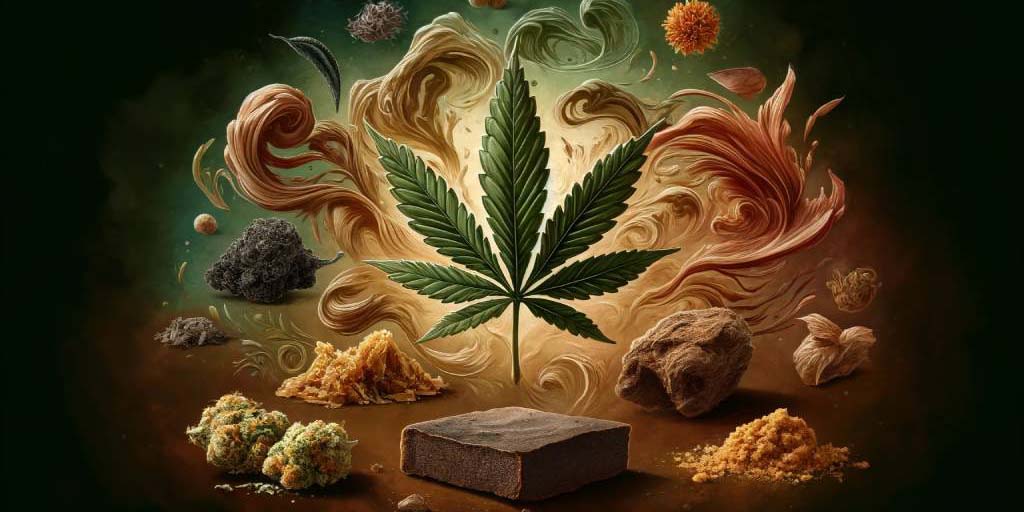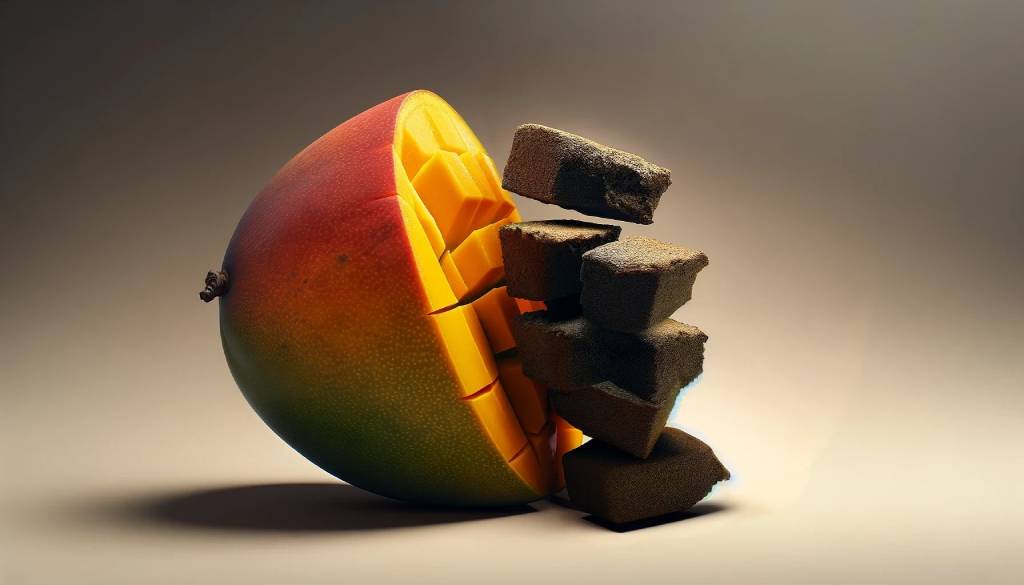
We previously wrote about how terpenes differ from each other in terms of taste, smell, and effects. We are now learning more and more about all the terpenes found in cannabis. It has even become possible to analyze the terpene profile of cannabis and thus better determine which strain suits you best.
In this article
What is Hashishene?
Hashishene is a terpene that is mainly found in Moroccan hashish. It has a unique earthy and floral flavor profile. This flavor profile is typical for hash, especially for the varieties that come from Morocco. Scientists hypothesize that hashishene forms when cannabis buds are dried in a specific way, which you will read about later.

Hash Terpene
In 2014, the “terpene” hashishene was accidentally discovered. Scientists were looking for a new terpene that could be an aromatic indicator of hash . The aim of the research was to develop technology that could detect hash without the help of drug-sniffing dogs. Not the most 420-friendly experiment, but it has opened doors to new research. Approximately 15 grams (probably) of Moroccan hash was analyzed in a laboratory. The scientists were surprised by the discovery of a terpene that had not been previously recorded in cannabis.
 The research team named this new terpene "hashishene." The terpene profile of the examined hashish consisted of approximately 15% of the newly found hash terpene. The terpene was not completely new to scientists, as it had previously been found in very small amounts in the Scottish green mint plant (Mentha cardiaca L).
The research team named this new terpene "hashishene." The terpene profile of the examined hashish consisted of approximately 15% of the newly found hash terpene. The terpene was not completely new to scientists, as it had previously been found in very small amounts in the Scottish green mint plant (Mentha cardiaca L).
Present in Hash, not in Weed
Since the discovery, the newly found terpene has mostly flown under the radar. Researchers were perplexed. How is it possible that hashishene does not appear in the buds but then miraculously appears in the hash? Fortunately, it didn't take long to find the answer. What turned out? Hashishene resembled Beta-myrcene so much that coincidence was no longer an option. The formation of hashishene, or rather the process of Beta-myrcene to hashishene, depends on two factors.
- The powerful UV-rich African sun: cannabis farmers in Morocco place the harvested flower buds on the roof of their huts. There, the buds are constantly exposed to the relentless African sun.
- The drying method: In the West, we put our harvest in an airtight jar, preferably with a moisture absorber in a dark place in our house. This is all to ensure that the THC remains intact and we have the strongest weed. In Morocco, it is done differently; the hash is directly exposed to the air and sun, leading to photo-oxidation.

During photo-oxidation, THC degrades into CBN. For many, this may sound like an undesirable situation, but don't forget the power of the entourage-effect. In short, the entourage effect is the synergy of all substances in cannabis that contribute to the psychoactive power instead of just a high THC percentage.
The Future of Terpenes
External factors thus influence the terpenes in cannabis. In this case, it is a combination of beta-myrcene, the sun, and fresh air. Naturally, you then ask yourself, what does this mean for other terpenes? What other possible smells, tastes, and effects can be influenced by chemical reactions in terpenes? Unfortunately, this research is still in its infancy, and there is still much to discover. To all students and scientists, we say "good luck, and we are watching closely"!
Sources
- Shop, A. G. (2018, January 31). Hashishene, the new terpene of cannabis. Alchimia Grow Shop.
- Colbert, M., & Colbert, M. (2023, June 15). Cannabeginners: Hashish-e-what? Hashishene explained. High Times | The Magazine Of High Society.
- One, A. (2024, May 28). Hashishene: a terp that gives Moroccan hash its unique aroma. Fast Buds Seeds.